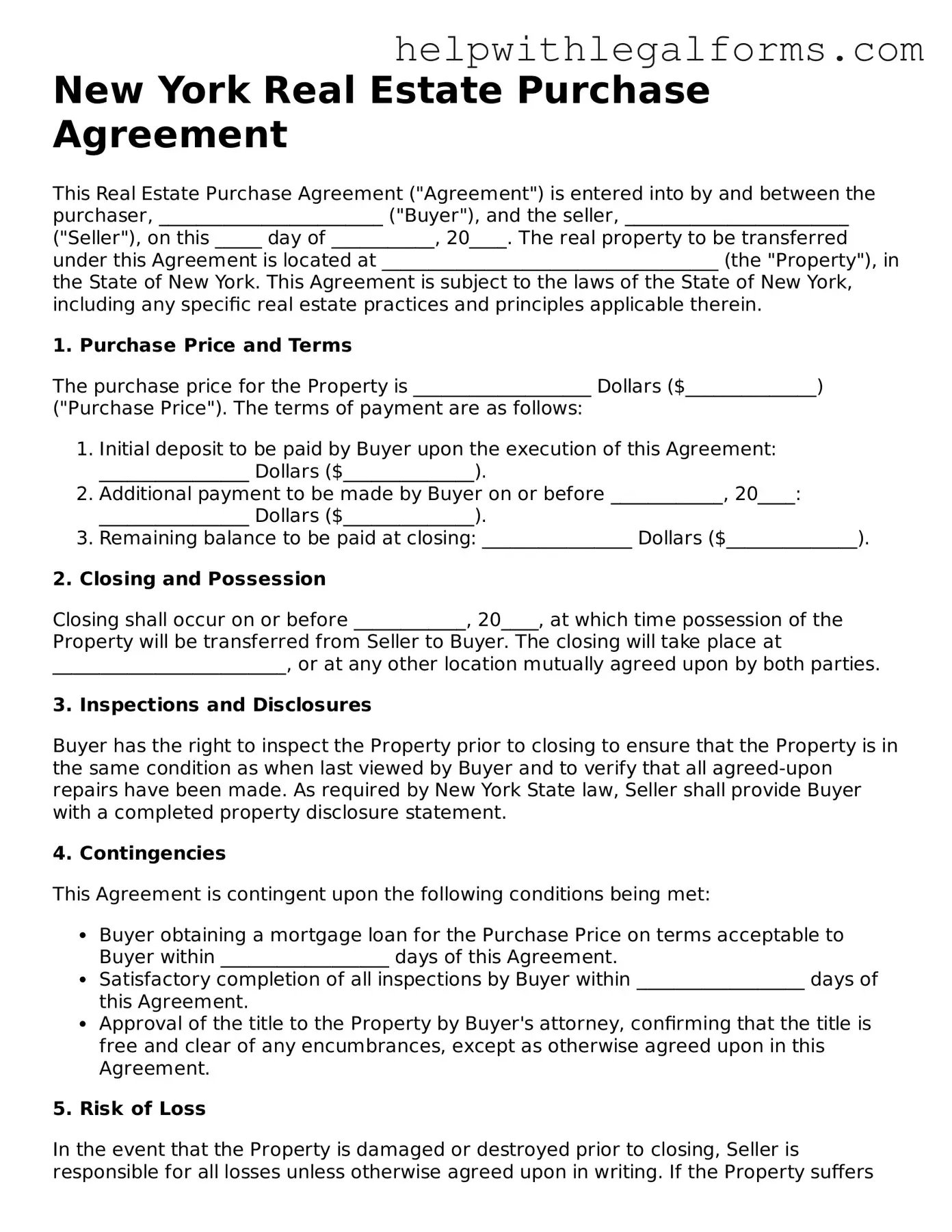New York Real Estate Purchase Agreement
This Real Estate Purchase Agreement ("Agreement") is entered into by and between the purchaser, ________________________ ("Buyer"), and the seller, ________________________ ("Seller"), on this _____ day of ___________, 20____. The real property to be transferred under this Agreement is located at ____________________________________ (the "Property"), in the State of New York. This Agreement is subject to the laws of the State of New York, including any specific real estate practices and principles applicable therein.
1. Purchase Price and Terms
The purchase price for the Property is ___________________ Dollars ($______________) ("Purchase Price"). The terms of payment are as follows:
- Initial deposit to be paid by Buyer upon the execution of this Agreement: ________________ Dollars ($______________).
- Additional payment to be made by Buyer on or before ____________, 20____: ________________ Dollars ($______________).
- Remaining balance to be paid at closing: ________________ Dollars ($______________).
2. Closing and Possession
Closing shall occur on or before ____________, 20____, at which time possession of the Property will be transferred from Seller to Buyer. The closing will take place at _________________________, or at any other location mutually agreed upon by both parties.
3. Inspections and Disclosures
Buyer has the right to inspect the Property prior to closing to ensure that the Property is in the same condition as when last viewed by Buyer and to verify that all agreed-upon repairs have been made. As required by New York State law, Seller shall provide Buyer with a completed property disclosure statement.
4. Contingencies
This Agreement is contingent upon the following conditions being met:
- Buyer obtaining a mortgage loan for the Purchase Price on terms acceptable to Buyer within __________________ days of this Agreement.
- Satisfactory completion of all inspections by Buyer within __________________ days of this Agreement.
- Approval of the title to the Property by Buyer's attorney, confirming that the title is free and clear of any encumbrances, except as otherwise agreed upon in this Agreement.
5. Risk of Loss
In the event that the Property is damaged or destroyed prior to closing, Seller is responsible for all losses unless otherwise agreed upon in writing. If the Property suffers significant damage, Buyer has the right to terminate this Agreement and receive a full refund of all deposits made.
6. Legal and Binding Agreement
This Agreement constitutes a legal and binding agreement between Buyer and Seller under the applicable laws of the State of New York. Any disputes arising under this Agreement shall be resolved through mediation, and if necessary, legal action in the courts of New York.
7. Amendments and Addenda
Any modifications or amendments to this Agreement must be made in writing and signed by both Buyer and Seller. Any addenda to this Agreement are considered part of this Agreement and are subject to its terms and conditions.
IN WITNESS WHEREOF, the parties hereto have executed this Agreement on the date first above written.
Seller's Signature: ___________________________ Date: ____________
Buyer's Signature: ___________________________ Date: ____________
